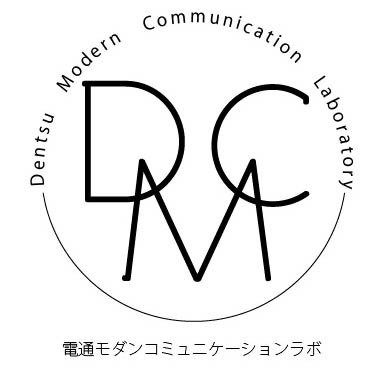Note: This website was automatically translated, so some terms or nuances may not be completely accurate.
The Lost Copywriter
This time, we introduce the book "The Lost Copywriter" (East Press) by Keita Kusaka, who has been remarkably active in recent years at poster exhibitions across various regions and is also a senior colleague at our company.

Based on the author's background and the book's title, you open it expecting "some kind of work philosophy book about creativity (especially copywriting)." Yet, right from the start, it plunges into descriptions of the author's student days as a backpacker wandering abroad. You might think, "Ah, this must be the opening, the introduction? He'll probably tie this experience back to his work as a foundational story, right?" But young Kusaka continues his youthful wanderings at length. Readers who opened this book seeking a "work theory" completely lose their purpose and find themselves "lost," forced to tag along on his youthful odyssey.
Yet, as you turn the pages—suspected of being a spy in Russia, witnessing a harrowing bird burial in Tibet, being dragged into a Taliban office in Bamiyan for tense negotiations—you find yourself drawn into the fast-paced narrative. Finally, having reached the deadline for his journey of self-discovery without finding himself, the young Kusaka returns to Japan, and Chapter One concludes. "Ah, so Chapter Two begins with his work philosophy based on these experiences!" the reader recalls the original purpose.
The essence lies in what cannot be captured by summaries or key points
Yet, as Chapter Two unfolds, it once again chronicles the struggles of "new employee Kusaka," and readers find themselves losing sight of their original purpose while still being drawn into the narrative. By the time Chapter Three arrives, a smooth path to a successful creative career seems to open for the now-mature Kusaka. But just then, he falls gravely ill and must step away from the front lines of work for years. During this time, he becomes a father, loses a loved one, attends his own university professor father's retirement lecture, experiences the Great East Japan Earthquake... and before they know it, readers feel as if they're running alongside the author's life.
Then comes the torrential Chapter Four, titled "Life's Counterattack." While easing back into work, he becomes involved in a peculiar event called the Self Festival in Osaka's Shinsekai district. This connection sparks a chain of events leading to the conception of the "Shopping District Poster Exhibition" framework—a project that continues to generate buzz in media and on social networks—and culminates in a flurry of awards. However, the book doesn't explicitly state how the various aspects of his life described up to this point directly connect to these new developments.
Yet for readers who have run alongside the author's life thus far, this outcome feels inevitable. While it would be possible to organize and categorize the factors behind the explosive buzz and explain them with a knowing air, this book deliberately avoids that format. What business books might call conclusions or TIPS are actually tucked away at the end as "bonus material" (what balance!). Yet, hints for that purpose are scattered throughout, and for us who have accompanied the author this far, it's already self-evident that the essence often lies in the parts that can't be captured by summaries or key points.
To summarize: a life journey story of someone who found their way back from being lost via a route no one could have imagined?
I'd rather not summarize this book too much, but if I had to condense it into one line to spark interest, it might be: "The complete record of someone who abandoned the path to conventional success after illness, sought their own unique way to fight, and ultimately achieved remarkable results." (That's more than one line...)
I vaguely imagine that each person's life is an independent journey, and human society functions by sharing experiences from those journeys – "Hey, there was this interesting thing over there," "That place was terrifying." Through everyone's trial and error, the world gradually becomes a little easier to live in. In that sense, this book—a travelogue of a journey that seemed utterly lost at one point, yet found its way back via a route no one else could have imagined—is a rare and precious record of a journey that many people should share.
Another defining feature of this book is its "extraordinary number of characters." Counting them up, 208 individuals appear in some connection to the author. In other words, it's also the complete record of how so many people's separate journeys intertwined and overlapped, sparking some kind of chemical reaction.
There's a passage where the author likens the process of creating posters—interviewing shop owners, uncovering their personalities and histories, and expressing them—to ethnography, calling it "ethnocreative." Beyond the pursuit of productivity and efficiency, there truly seems to be a realm one can only reach by accumulating journeys driven by curiosity, by taking detours guided by that very curiosity.
In our private lives too, I believe it's vital to occasionally get lost, sometimes blur the lines between work and personal life, or listen to the travelogues of those living lives utterly different from our own—these opportunities are key to creating something new. I sincerely hope this book serves as one such catalyst for you.

Was this article helpful?